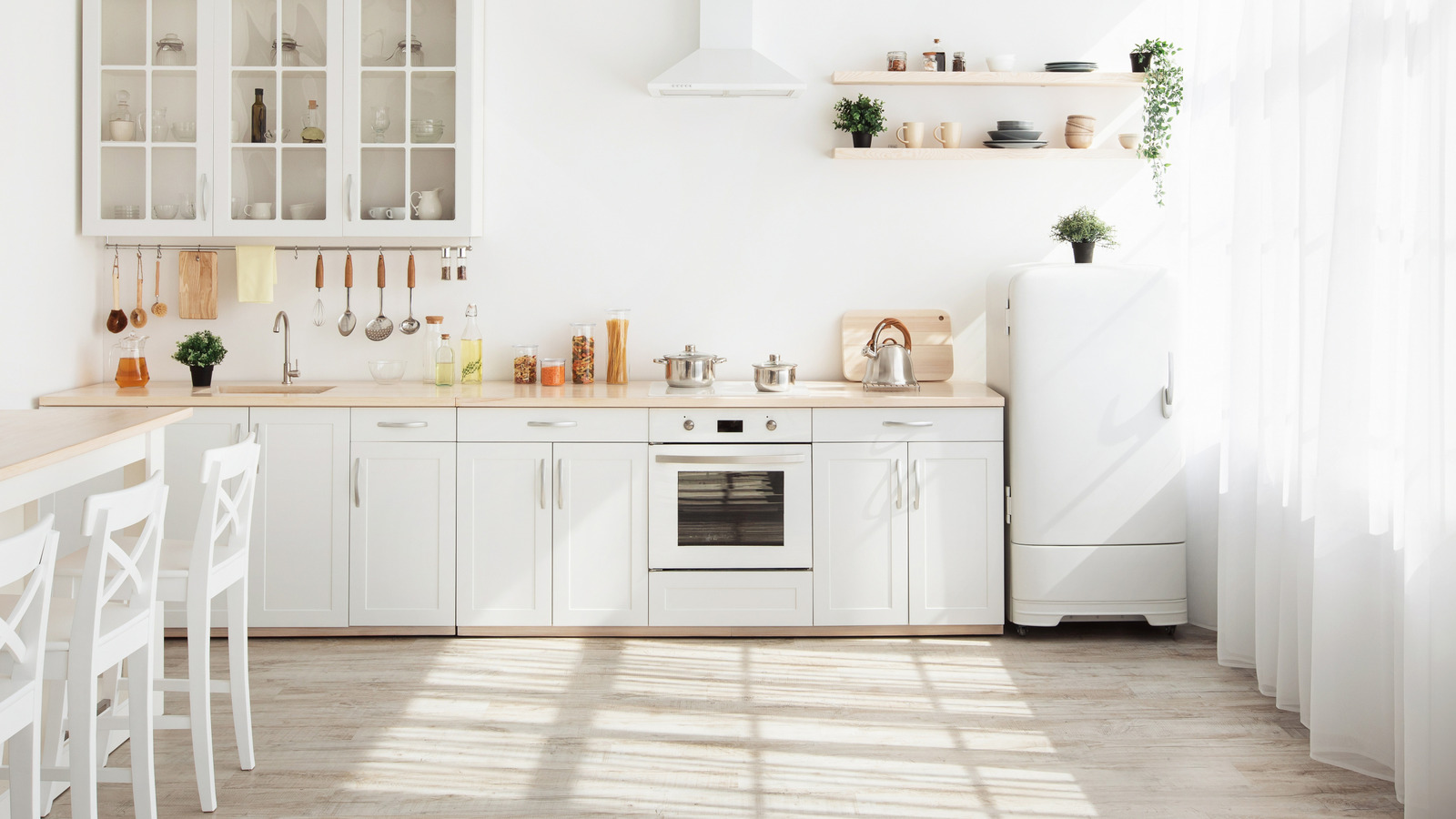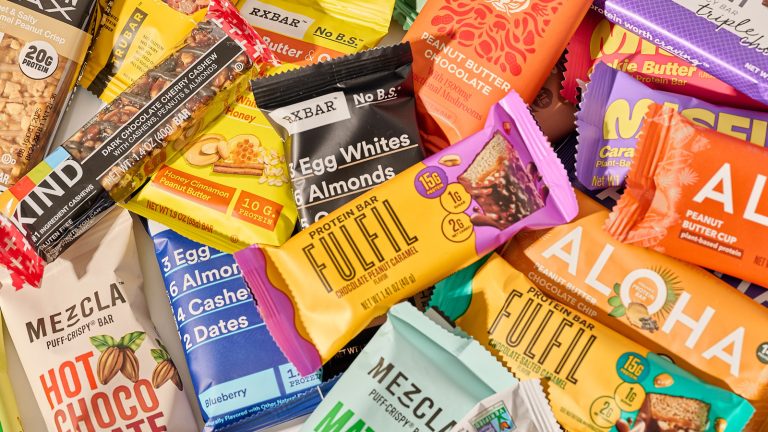Kitchen floors endure harsh treatment and unique stresses not encountered in other parts of the home on a daily basis. Heavy foot traffic, dropped utensils, food spillage, and temperature fluctuations are common occurrences within the kitchen, making choosing the right flooring an important decision. Finding the right material for water resistance, ease of maintenance, and overall durability can be a difficult task, let alone if you only start by selecting from materials that match your aesthetic desires. Fortunately, interior designers spend a lot of their time considering designing kitchens and comparing how different materials offer both aesthetic appeal and practicality in the home.
Making a mistake when choosing your floor can turn what you thought would be a beautiful kitchen into a maintenance nightmare. To help save the hassle when choosing kitchen flooring, we talked to the experts to narrow down your options. Here are six flooring options that are both durable and stylish, recommended by interior designers and flooring specialists.
Porcelain Tiles
To bring a classy feel and exceptional durability to your kitchen floor, porcelain is a standout choice, which consistently ranks well amongst interior design experts. Elizabeth Ego, founder of the Agape Design Group, certainly agrees, sharing that porcelain is both denser and harder than ceramic, which makes it resistant to scratches, moisture, and stains.
“Resistance to water and moisture makes them perfect for spill-prone areas around sinks and appliances,” said Ego. “Easy to clean and maintain, porcelain tiles are also very durable and resistant to chipping and cracking, offering a smart, lasting investment for a busy kitchen.” This makes porcelain a fantastic long-term investment for the busiest of kitchens, offering long-term value from reduced needs for maintenance.
Mitra Shahi, lead designer of the Shahi Design Group, further adds that porcelain comes in numerous designs. “[It] comes in endless styles — including wood and stone looks — so it blends easily with any design.” Sallie Lord, founder of GreyHunt Interiors, echoed Shahi’s sentiments around the flexibility of porcelain for designing kitchens. “Its versatility in colors, patterns, and styles, including those that mimic natural stone or wood, makes it suitable for virtually any kitchen design, from modern to traditional,” says Lord. Considering porcelain brings aesthetic appeal, long-term durability, and high-end water resistance, it’s understandable why expert interior designers continue to use porcelain in kitchens.
Engineered Hardwood
Engineered hardwood is a strong contender for one of the best materials for kitchen flooring. “For a great balance between style versatility and practical performance in kitchens, I often recommend engineered wood,” Elizabeth Ego said. “It offers aesthetic appeal and warmth with enhanced durability and better resistance to moisture and temperature fluctuations compared to solid hardwood.” Ego continued by suggesting that using engineered hardwood with a durable wear layer, it can offer better water resistance than hardwood while resisting warping and swelling.
Engineered hardwood is a compromise between the natural beauty of authentic hardwood and the practical limitations and requirements of a kitchen. Mitra Shahi agrees, claiming engineered hardwood is a great fit for large family kitchens, as the material is both kid and pet friendly. “The variety of wood species, finishes, and plank widths available ensures it [engineered hardwood] can complement a wide range of kitchen styles while standing up to daily use,” Ego adds. This means that you can easily find engineered hardwood which matches the style of your dream kitchen while protecting your floor from damage and maintenance problems.
Natural Wood Flooring
Natural wood is a classic material used for flooring in kitchens. Praised by homeowners for its beauty and classic feel, Sallie Lord loves wooden flooring, despite them requiring more maintenance. Although wooden flooring does require consistent upkeep, unlike other flooring materials, Lord notes its versatility. “It can be repaired with dings and scratches,” says Lord. “I would consider running wood flooring in a herringbone pattern that hides more imperfections or even inlaying a tile flooring to take the brunt of the use.” When selecting the natural wood you would like, Elizabeth Ego recommends, species like oak, maple, and hickory, which are more durable.
Bringing warmth and aesthetic appeal to your kitchen, make sure to remember to avoid using wet or steam mops on engineered hardwood and to promptly clean any spills on the floor. Ego recommends refinishing over time to maintain its appearance. Sallie Lord shared that, while wood can be durable, standing moisture must be cleaned up immediately. “A decoupling membrane [can] help reduce cracking. It goes between the tile and sub-flooring that can contract and expand,” she said. With proper care and treatment, its possible to bring the aesthetic beauty of natural wood to your kitchen while maintaining a durable floor.
Terrazzo
Terrazzo is a high-end material used by interior designers which is also perfect for kitchen floors. According to Mitra Shahi, if you’re looking for the luxury look paired with maximum durability, terrazzo is a popular choice. “Terrazzo, ultra-resilient composite of stone chips and concrete/resin — [are] used in airports for a reason! High-style, high-traffic homes. Seamless and custom-designed, but installation is pricey,” says Shahi. “Natural stone or terrazzo are beautiful and durable but require more maintenance.” Due to its high installation cost, you will often find terrazzo in commercial style kitchens looking for the most durable flooring material on the market. It’s easy to clean, but it is also excellent for homeowners prioritizing performance over budget.
Rarely needing replacement, terrazzo is arguably the best flooring material in terms of value over the long-term. “Considering that flooring is not something most people can or want to constantly change, making a smart and long-lasting choice is advisable for any kitchen,” Elizabeth Ego says. “Durability and ease of cleaning contribute significantly to the long-term satisfaction and functionality of the space, regardless of the kitchen’s size or usage intensity.” Finally, terrazzo can often be purchased with customized design options, allowing for unique designs and kitchen aesthetics due to the endless combinations of colors and patterns using stone chip selection. For the homeowners prioritizing best-in-class durability and one-of-a-kind kitchen designs, terrazzo is an excellent material.
Marble Tiles
A popular choice for kitchen countertops and sinks, marble is the perfect material for elegant designs and kitchen floor plans. Known for having a sophisticated appearance, marble is prized for being one of the most beautiful materials in home design. As stated by Elizabeth Ego, “Marble tiles can add a touch of elegance to a kitchen with their unique veining and luxurious appearance.” Marble as a material for flooring will be second to none for homeowners looking for the most luxurious patterns and stunning visuals for their kitchens.
It is important to remember however that marble may not be the optimal choice for individuals looking for a low-maintenance kitchen flooring option. “While relatively durable, marble is prone to scratches and etching from acidic substances and can be slippery when wet, requiring rugs or textured finishes in high-traffic zones,” says Ego. Furthermore, due to being porous, marble requires regular sealing, which needs to be completed a minimum of once or twice a year depending on frequency of usage. “[Marble tiles] demand consistent maintenance with prompt spill cleaning using pH-neutral cleaners to avoid etching and damage to the finish,” she stresses. While marble tiles do raise many practical considerations, it is undoubtedly a pinnacle of elegance with its beauty unmatched by alternative materials.
Terracotta Tiles
Terracotta tiles are a popular kitchen flooring option due to their Mediterranean appeal and depth of character. “Terracotta tiles can bring a warm, rustic charm to a kitchen with their earthy tones and natural texture,” Elizabeth Ego says. Perfect when paired with mosaic patterns and galley kitchens, it is understandable why people choose textured terracotta tiles for bringing a charming, cozy feel to their kitchen. This makes the home more inviting to guests and comfortable for the family.
Unfortunately, because of their porosity, Ego notes that terracotta tiles require frequent upkeep. “While durable in terms of material, they need consistent care and maintenance, including periodic resealing and gentle cleaning products to preserve their finish and appearance,” Ego says. Similar to marble tiles, homeowners wanting low maintenance or highly durable kitchen flooring might want to consider other materials. If you want to create a warm home kitchen with a balanced design theme, terracotta tiles have unique appeal which can’t be found with the other materials featured in this list. At the end of day, Mitra Shahi gave fantastic advice for selecting the right flooring material for you: “Pick based on your lifestyle.”





